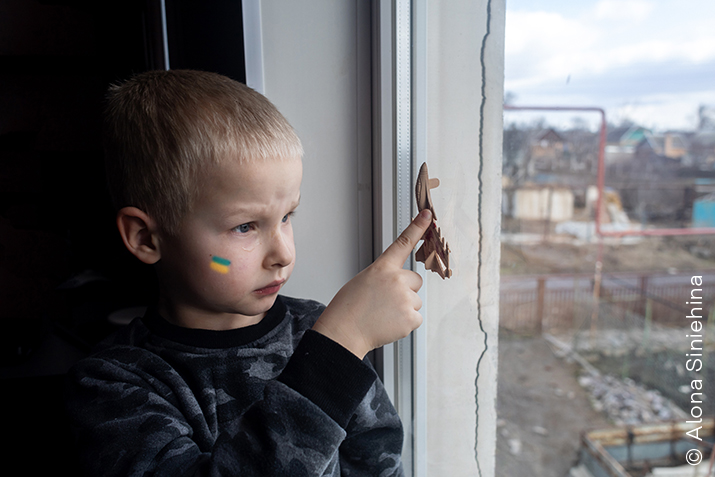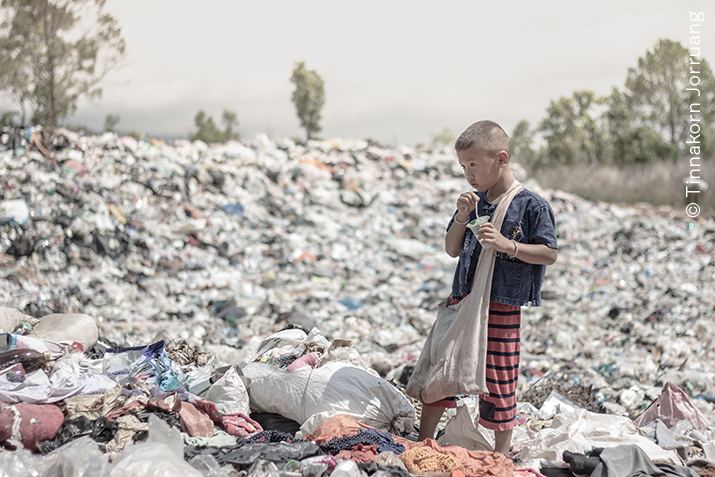HAPPENING AT THE UN
REPORT ON CHILDREN LIVING IN WAR ZONES
2024 proved to be one of the most devastating years for children living in areas affected by armed conflict. According to an analysis by Unicef, the impact of the war has reached unprecedented levels, with a shocking number of children forced to live in extremely vulnerable conditions. Over 473 million children, more than one in six in the world, are in war zones, while the number of active conflicts is the highest since the end of World War II. The violence is escalating and the consequences for the youngest children are getting worse.
One of the most alarming aspects concerns child soldiers, forcibly conscripted and deprived of their childhood. In countries like Sudan, Myanmar or the Democratic Republic of Congo, tens of thousands of minors are forced to fight, suffering constant psychological and physical violence. Education is a right denied to them, they do not learn to read and write, they are ignorant of history, of why they are fighting fight, but are trained to use weapons.
Wars are denying not only a life now, but also a future to entire generations. It is estimated that over 52 million children in countries at war do not attend school. In the Gaza Strip and Sudan, some have already missed more than a year of lessons, while in Ukraine and Syria, to name a few examples, many school buildings have been bombed, destroyed, occupied by armed groups or turned into military bases.
Another dramatic issue, especially in conflict-ridden areas, is child malnutrition, which has reached critical levels. The war destroys crops, blocks aid and forces families to flee, leaving children without access to food. To better understand the situation, it is useful to refer to the IPC (Integrated Food Security Phase Classification) index. This is an international system used to measure and classify food insecurity and malnutrition in a given geographical area. The Ipc divides the severity of the food crisis into five stages, with stage 5 being the most critical level. This is the scale from first to fifth: 'No/minimal food insecurity' (households have adequate access to food and nutrition); 'Stressed' (access to food is limited, but there is no emergency); 'Crisis' (levels of malnutrition increase, households sell essential goods to buy food); 'Emergency' (widespread acute malnutrition, high mortality risk); 'Catastrophe/Famine' (extreme hunger, widespread death from malnutrition and lack of food). According to these classifications in North Darfur, Sudan, the year 2024 saw the first declared famine since 2017. More generally, it can be said that half a million people in five war-stricken countries are in Ipc status 5.
Added to this are the direct consequences of the fighting. The UN verified over 32,990 serious violations against 22,557 children in 2024, the highest number since monitoring began. In the first nine months of last year, the number of children killed or injured in conflicts exceeded the number recorded for the whole of 2023. Gaza, Ukraine and Sudan are among the hardest hit areas, with bombings claiming thousands of child victims.
The situation is particularly serious for girls, who suffer even more brutal violence than their male peers in war contexts. In Haiti, for example, cases of sexual violence against minors increased tenfold in 2024. Then there is the situation of children with disabilities, who are one of the groups most exposed to both violence and discrimination, often finding themselves without access to basic services.
In addition to the physical effects, war obviously has a devastating impact on the mental health of children. Growing up under bombs, seeing loved ones and friends die, living in constant fear, leaves deep scars that are sometimes irremediable. Many children develop post-traumatic stress disorder, anxiety, depression, have nightmares and tend to isolate themselves. These psychological wounds risk affecting the future of an entire generation, creating a spiral of instability that could last for decades and fuel new violence in the future by today's victims.
The consequences of conflicts are also reflected in access to medical care. About 40% of unvaccinated or under-vaccinated children live in war-affected countries, which exposes them to epidemics of measles and other preventable diseases. In contexts where conflict is ongoing, health infrastructures are often destroyed or inaccessible, and millions of children are left without medical care. This leads to an increase in child mortality, which further aggravates the humanitarian crisis.
2024 was also the most dramatic year for humanitarian personnel, with 281 workers killed. This has made it even more difficult to ensure that children have access to basic aid, such as food, water, medical care and education, because when international organisations are unable to operate safely, they are forced to suspend their intervention. Attacks on aid workers, which are on the increase, therefore also contribute to depriving millions of children of the vital assistance they need.
In the face of this tragedy, Unicef has launched an urgent appeal to all parties involved in conflicts to respect international humanitarian law, protect children and guarantee them a future away from war. It is difficult, however, to assume that this cry for help will be heard.








